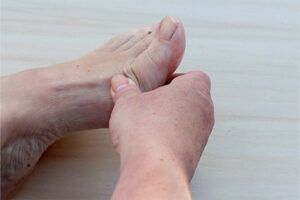Dermatology
Plaque Psoriasis
Defining Success in Psoriasis Care: Treatment Expectations and Clinical Goals
Overview
Body surface area (BSA) affected by psoriasis is a useful tool; however, treatment success often depends importantly on individual patients and their expectations and experience with the disease. Patients may prioritize factors such as the convenience of therapy and the impact of any remaining disease on their lives.
Regarding psoriasis treatment, how do you and your patients define success?
Alice B. Gottlieb, MD, PhD
|
|
“I tell every patient with psoriasis that my goal for them is clearance. In a perfect world, I could probably clear 90% of my patients. The patients I cannot clear often have another factor involved, such as a comorbidity that precludes choosing from the full repertoire of treatments, payment challenges, or Medicare issues.”
I tell every patient with psoriasis that my goal for them is clearance. In a perfect world, I could probably clear 90% of my patients. The patients I cannot clear often have another factor involved, such as a comorbidity that precludes choosing from the full repertoire of treatments, payment challenges, or Medicare issues. If they have psoriatic arthritis, my goal is for them to basically not think about their joints, to not limit their physical activity, and to do whatever they would like to do. And I evaluate my treatment successes based on when the patient is happy. I am in New York, and patients can very easily can tell you when they are not happy.
Are there objective goals that can be used to evaluate psoriasis treatment? Certainly. I include a patient’s affected BSA assessment in my chart, and I sometimes also include a vignette of what a patient can currently do that they could not do before. In terms of joints, there are objective ways to measure this by using patient-reported outcome measures such as the 12-item Psoriatic Arthritis Impact of Disease questionnaire or the Routine Assessment of Patient Index Data 3, where you can actually treat to a target that way. But, in the final analysis, a happy patient is the real target and the true measure of success.
Ultimately, we are all talking about efficacy, but sometimes patients are not happy because of their treatments. For example, some of my phototherapy patients have issues with their co-payments and/or taking time off from work, which affects their quality of life. In addition, many of my patients do not feel well when they take methotrexate. Thus, while efficacy is certainly part of the equation, it is not the only part. In addition, sometimes patients are receiving topical therapy even when they have too much disease to be managed via this route, and compliance can be an issue. When a topical treatment does not work that well, or if a formulation is oily and smeary, that can be inconvenient to a patient, who may not be able to get dressed in time and may have to take extra time before they go to work. Finally, some patients really do not like frequent injections, so the main reason that a dermatologist might change therapy for these individuals is so that they can be switched to a less frequent injection scheme. So, all of these considerations (ie, costs, side effects, and convenience of treatment) are factors that have to enter into the equation when deciding on treatments and/or treatment changes in patients with psoriasis.
Joel M. Gelfand, MD, MSCE
|
|
“Defining success requires a deep understanding of the patient, as well as an ongoing doctor-patient dialogue.”
This is an interesting question because, although we ask our patients whether they are happy with their psoriasis treatment, we recognize that some individuals may not speak up, even if they are not satisfied. It may be that they do not want to be perceived as complaining or perhaps that they generally defer to their doctor’s advice on matters of switching or the need to escalate therapy. But other factors may also be in play. We have conducted a number of studies examining the Dermatology Life Quality Index and similar tools used in estimating the disease burden of psoriasis. In some cases, an underestimation of disease burden can occur, and this may be driven, in part, by sociodemographic differences. I think that this illustrates the point that there are times when the clinician may look at a patient and think, “Wow, they are doing really well. They are basically almost clear,” while, in fact, the patient is still experiencing significant disease burden. Thus, defining success requires a deep understanding of the patient, as well as an ongoing doctor-patient dialogue.
If the patient does not have complete skin clearance, and if there is high confidence that it is due to an efficacy issue and not something else (eg, adherence), then the discussion may turn to how the patient’s incomplete clearance is affecting them. Are they anxious about their psoriasis affecting their relationships and their ability to do activities? How bad are their symptoms? Are the symptoms disturbing their sleep or impacting them in any way? After this type of assessment, we are better equipped to discuss with the patient the pros and cons of trying to get them totally clear.
With modern treatment, we can get a lot of our patients to a much better state, clearance wise, but we still can probably only get approximately half of our patients totally and completely clear. And only a small percentage of patients will remain clear because people lose response over time. So, there is a real balance that needs to be considered with the patient. If you chase completely clear skin as your objective and have already been through a number of therapies, you may be left with few good options years down the road.
Steven R. Feldman, MD, PhD
|
|
“My ultimate goal for psoriasis treatment is a happy patient.”
My ultimate goal for psoriasis treatment is a happy patient. There are treat-to-target guidelines from the American Academy of Dermatology and the National Psoriasis Foundation that suggest that your goal should be based on the percent affected BSA, depending on what time point you look at. But if a patient is happy with their treatment response, then that, to me, is a great end point.
I can appreciate the idea behind these treat-to-target goals. I think that some people believe that psoriasis is vastly undertreated and that doctors should be encouraged to treat to greater degrees of clearing. Personally, I am not quite convinced that there is so much undertreatment out there.
And then there is the issue of the systemic inflammatory effects of the disease. While that is an exciting area of research, I do not think that it is far enough along yet to conclude, based on what we know about systemic inflammatory disease, that you necessarily have to get patients completely clear to minimize cardiovascular and other risks of systemic inflammation.
References
Armstrong AW, Siegel MP, Bagel J, et al. From the Medical Board of the National Psoriasis Foundation: treatment targets for plaque psoriasis. J Am Acad Dermatol. 2017;76(2):290-298. doi:10.1016/j.jaad.2016.10.017
Barbieri JS, Shin DB, Syed MN, Takeshita J, Gelfand JM. Evaluation of the frequency of “not relevant” responses on the Dermatology Life Quality Index by sociodemographic characteristics of patients with psoriasis. JAMA Dermatol. 2020;156(4):446-450. doi:10.1001/jamadermatol.2019.4659
Gelfand JM, Feldman SR, Stern RS, Thomas J, Rolstad T, Margolis DJ. Determinants of quality of life in patients with psoriasis: a study from the US population. J Am Acad Dermatol. 2004;51(5):704-708. doi:10.1016/j.jaad.2004.04.014
Gorelick J, Shrom D, Sikand K, et al. Understanding treatment preferences in patients with moderate to severe plaque psoriasis in the USA: results from a cross-sectional patient survey. Dermatol Ther (Heidelb). 2019;9(4):785-797. doi:10.1007/s13555-019-00334-1
Maul J-T, Navarini AA, Sommer R, et al. Gender and age significantly determine patient needs and treatment goals in psoriasis – a lesson for practice. J Eur Acad Dermatol Venereol. 2019;33(4):700-708. doi:10.1111/jdv.15324
Menter A, Strober BE, Kaplan DH, et al. Joint AAD-NPF guidelines of care for the management and treatment of psoriasis with biologics. J Am Acad Dermatol. 2019;80(4):1029-1072. doi:10.1016/j.jaad.2018.11.057
Strober BE, van der Walt JM, Armstrong AW, et al. Clinical goals and barriers to effective psoriasis care. Dermatol Ther (Heidelb). 2019;9(1):5-18. doi:10.1007/s13555-018-0279-5













